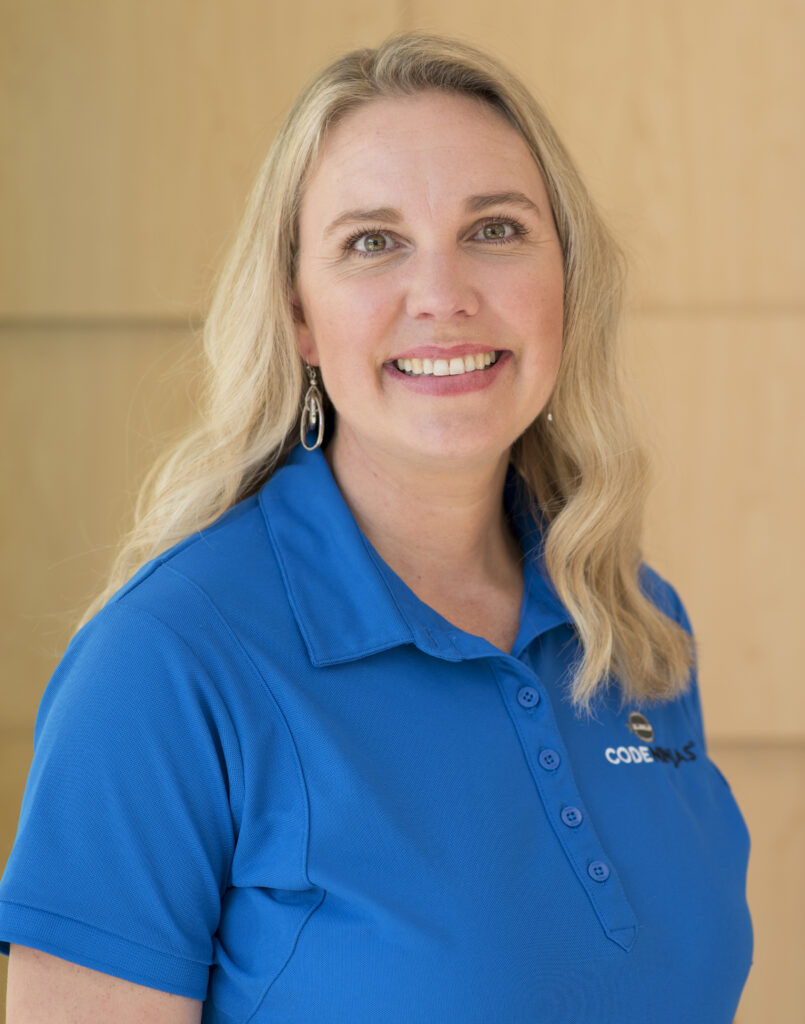Learning computer code does not have to mean sitting in front of a computer screen for hours. There are many activities that teach the skills needed to write a good computer program. Critical thinking, problem solving, algorithms, and patterns can be learned in the physical world.
You may have heard these called unplugged activities. It’s amazing to see children learn when they aren’t told they have to learn. They are able to explore and enjoy life and learn along the way. Here are a few of our favorite unplugged activities that allow a child to learn the concepts of computer coding with lots of body movement and silly fun. To make it easy, each activity uses a coder, who gives instructions; and a follower, who executes them.
Hopscotch
Coding Concepts:
- Loops
- Conditional Statements
- Algorithms
Hopscotch is a great way to learn about loops! Have the coder guide the follower as they hop from 1 to 10, then hop back to the start. It can also teach if/else statements such as if the rock is in the next square, pick up the rock; otherwise (else) hop to the next square. For the next level of fun, add a coder square next to the hopscotch board. The coder can draw arrows or commands in the box, and the follower has to follow the instructions — or algorithm — to the finish!
Simon Says
Coding Concepts:
- Decomposition
- Sequencing
- Functions
Simon Says teaches a process programmers call decomposition, which is breaking a larger program into small steps. Have your coder teach someone to do something, like riding a bike. The coder will have to break down each step of the task or the follower won’t be able to perform it correctly. To teach riding a bike, they could try something like this:
- “Simon says, pick up the bike.”
- “Simon says, sit on the bike.”
- “Simon says, put one foot on the pedals.”
- “Simon says, put both feet on the pedals and start pedaling.”
Once the follower has successfully completed the task from the coder, have them label the function with a name, and then recall it whenever they want! Once a function is defined, it can be used over and over and over again!
For example, once “ride a bike” has been taught, the follower can now say “Simon Says ride a bike” and have the follower accomplish the entire program as a function. This way, the coder doesn’t have to go through all the steps every time. See how many activities your coder can decompose and create named functions for.
Follow the Leader
Coding Concepts:
- Branching/Conditional Statements
Conditional statements tell a computer what to do based on an if/then statement. For instance, as the coder you could say “If I hop twice, then you hop twice” and the follower would have to hop twice every time you do. Take turns coming up with statements as coder and follower and see who can be the most creative.
Once your child has mastered the basics, you start to make the game harder. Try having the follower perform a DIFFERENT action than what the coder does. For example; “If I start walking, you have to skip” or “If I stand up you sit down.” If your child masters this new twist, try having a list of several commands and see if they can remember what each one was.
Water Gun Coding
Coding Concepts:
- Algorithms
- Debugging
Use some chalk to make a 6×6 square grid. Color in a few squares that represent the splash zone. The “programmer” stands outside the square with a water gun or silly string. The programmer issues simple commands to get the program—which is the person playing in the squares—to step on one of the splash zones so they can spray them.

WORDS: CHANDELLE BRINK
Owner of Code Ninjas, Rapid City

